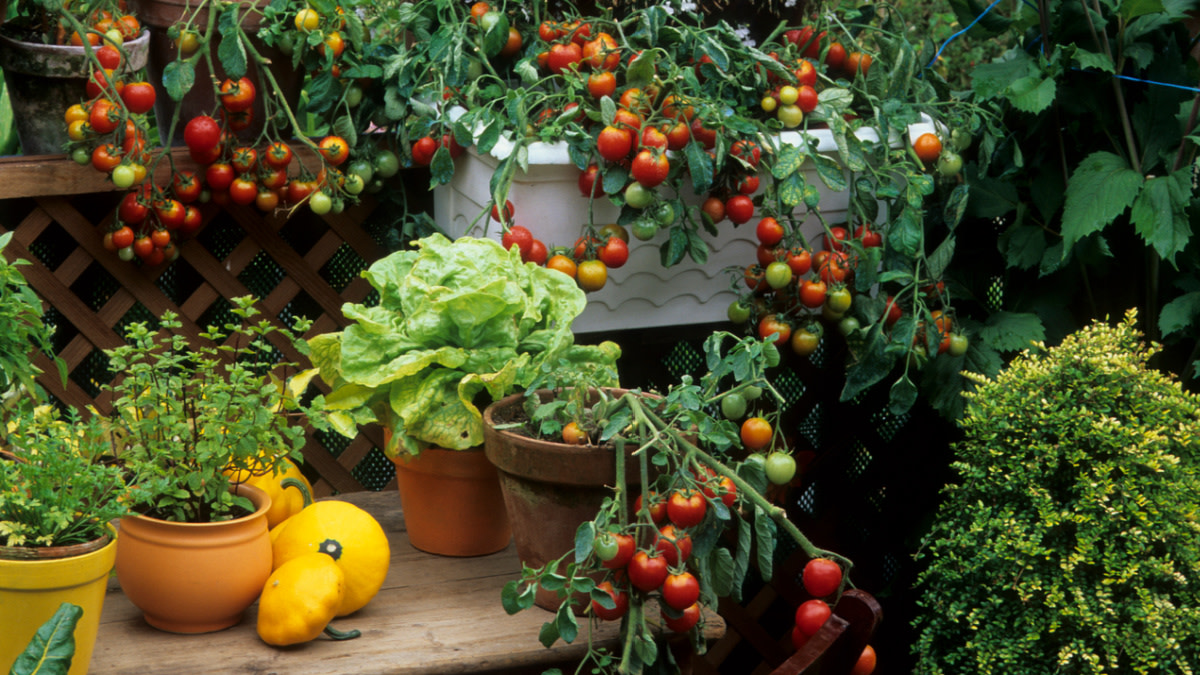
We all want more space. We especially want more space to grow more things, which is especially true for the modern homesteader, mainly because space can be hard to come by. If you live in a city of bustling urban sprawl, but seek to live a homesteader’s life, this feeling is probably commonplace.
That’s why I lean on container gardening a lot. I don’t have a lot of space, but what I do have is a lot of ambition. And I have the internet, where I can see the ingenuity of others who use their space in ways that might otherwise slip my mind, which is exactly what container gardening did up until a few years ago.
Growing vegetables in containers provides, if I’m permitted to make a bold statement, the most control you’ll ever get out of your gardening experience. You can control exact soil conditions and water, exactly how much sun, wind, and rain the plant receives, and whether freeloading critters are able to make a meal out of whatever you decide to grow.
You can grow food anywhere that is big enough to fit a 5-gallon bucket. This opens up a lot of places where a raised bed wouldn’t do well and a ground-level garden isn’t an option. In a perfect world, every unused parking lot in continental North America would host a container garden, but we’re not quite there yet, so let’s start with the space that we do have and the vegetable varieties at our disposal.
Best Produce for Your Pots
Vegetables have come a long way, and nowadays it’s possible to find a variety of damn near anything that will grow really well in containers. Pumpkins, eggplant, cucumbers, carrots, and even corn can find homes in container gardens. In fact, rather than take up space in my gardens by planting rows of potatoes, I choose to plant them inside garbage bins with a few dozen holes drilled into the bottoms to allow drainage. Carrots, beets, beans, radishes, kale, lettuce, squash, the list is endless. We’re not even touching on the subject of tropical and non-tropical fruit trees and bushes.
The reality is that through genetic diversification, plants that once needed lots of space have been transformed into plants that don’t. You might find that container-specific vegetables rectify the space issue by sacrificing the size of the individual vegetable being harvested. So how do we create a successful setup?
First, we need to understand what makes any given pot or container ideal for growing vegetables in. I use the term “container” loosely because just about anything that can hold soil could potentially be classified as a container. For example, while I use plenty of 5-gallon buckets to grow my tomatoes in every year, which spares my raised beds more room for other vegetables, I also tend to plant my potatoes in my Rubbermaid garbage cans, which I mentioned earlier. The potatoes do just fine, space in the beds is saved, and everyone is happy. Recently, I started using empty chicken feed bags as containers as well, with large degrees of success.
But let’s just assume you’ve got a bunch of large pots from a local garden center. Then comes the task of figuring out what you want to grow in them and making the necessary purchases. Different plants have different requirements, but I’ll use the example of carrots to better articulate what needs to be done.
Carrots are a relatively deep rooting plant. We know this because we know what the root looks like, so right away we also know we need a vertical container. We find our perfect container and learn what carrots need for ideal growth. Carrots do best in a loose, well-draining soil with some sand mixed into it and some compost in the first 10 inches. Then we find our ideal variety of carrot, maybe one that doesn’t root as deep but grows quite thick in diameter.
A package of seeds, a couple bags of soil and compost later (don’t forget that few handfuls of sand mixed in) and the carrots are planted. Four weeks later, they’ve sprouted plenty and we thin them out to discourage competition which might result in smaller carrots.
Soil and Sun Autonomy
One of the best aspects of growing food in containers is that you have complete control over soil conditions at all times. This is even more important when you look at soil-sensitive plants like blueberry bushes. In recent years, container-specific cultivars like Top Hat Blueberry bushes have emerged on the scene. Because blueberry plants require a low-pH soil (something like 5.5 or so), these requirements are much easier to maintain when the plant is potted in a container. There are also new varieties of blackberry and haskap plants that are perfect for growing in containers, which opens up a host of new opportunities for the urban backyard homesteader with more concrete than dirt.
The ability to control exact soil conditions alone makes container gardening a home run method, but add to this the value of mobility. Is the sun drying out the soil too quickly? Simply move the pot to another location where it won’t get as much direct sunlight during the heat of the day, which is often as easy as relocating it to the side of the house. Pests chewing down those potted snap peas during the midnight hour? Put them up on the deck at night where hungry cottontails can’t reach them. It's not uncommon for my potted vegetables to move more than half a dozen times throughout the growing year based on specific requirements that aren’t being met.
Container gardening is a multifaceted win for the homesteader. That being said, as it pays to look at the unused space around your home and contemplate what you might grow there, chances are container gardening can fill that space quite nicely, and the rewards are always worth it.







